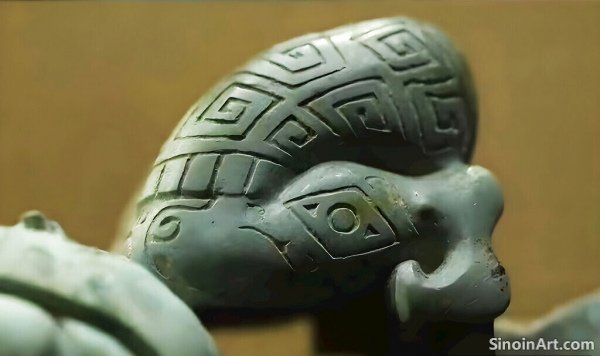The Development of Bronze Mirrors in Ancient China: Reflecting History and Society
|
Bronze mirrors in ancient China were not simply utilitarian objects for reflection; they were symbols of status, artistry, and spiritual beliefs. The evolution of bronze mirrors reflects the technological advancements, aesthetic preferences, and societal changes that took place throughout Chinese history. The development of these mirrors provides a valuable insight into ancient Chinese culture.  Early bronze mirrors were often small and simple, with designs featuring geometric patterns or representations of mythical creatures, with different patterns and symbols used in different eras. As casting techniques improved, mirror designs became more complex and intricate, with elaborate borders and finely detailed decorations. The evolution of these objects provides a valuable insight into the development of ancient Chinese metalworking.  Bronze mirrors were often used in ritualistic settings, associated with both the living world and the world of the spirits. Mirrors were seen as symbols of light and clarity and were often used in ceremonial and religious contexts. The spiritual importance of mirrors was reflected in their designs and use.  Beyond their ritualistic use, bronze mirrors were also important items of personal adornment and were often gifted to convey friendship and respect. The act of gifting mirrors became an important cultural practice. Mirrors were an important element of social life in ancient China. The study of Chinese bronze mirrors provides valuable insights into the material culture, social practices, and artistic sensibilities of ancient China. The continued study of these artifacts helps to tell us more about the history of Chinese culture. They serve as a window into the world of those who lived long ago. |
Tag : Chinese bronze mirrors, ancient mirrors, ritual objects, Chinese art, artifact history
Related information
- The Impact of Bronze Ware on Ancient Chinese Ritual Practices: Sacrifices, Offerings, and Performances
- Bronze and the Development of Early Chinese Astronomy: Tools of Observation and Understanding
- The Ritual Use of Bronze Mirrors in Ancient China: Connecting Worlds and Warding Off Evil
- The Art of Bronze Casting: Techniques and Innovations in Ancient China
- Analyzing the Surface Patina of Chinese Bronze Ware: A Story of Time and Environment
This article explores the impact of bronze ware on ancient Chinese ritual practices, highlighting their use in sacrifices, offerings, and performances, and demonstrating their importance in connecting the earthly world with the realms of gods and spirits.
This article explores the use of bronze in ancient Chinese astronomy, highlighting the creation of astronomical instruments such as armillary spheres and sundials, and demonstrating how these objects facilitated the observation and understanding of the universe.
This article explores the ritual use of bronze mirrors in ancient China, highlighting their role in guiding souls in the afterlife, in divination practices, in warding off evil, and demonstrating the powerful spiritual beliefs associated with these reflective objects.
This article explores the art of bronze casting in ancient China, highlighting the development of techniques like piece-mold casting and the lost-wax method, and emphasizing the control of alloys, temperature, and the innovations of ancient metalworkers.
This article explores the surface patina of Chinese bronze ware, discussing its formation, its value as a historical record, the factors that influence its appearance, and the techniques used to distinguish between natural and artificial patinas.